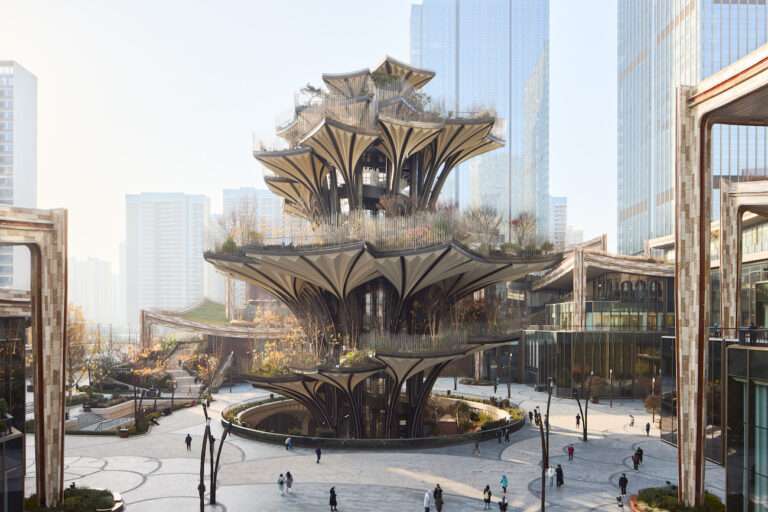Rounded columns “simulate elements washed by the sea” at this beach house on Mexico’s Pacific Coast, designed by César Béjar Studio and Fernando Sánchez Zepeda.
The 465-square-metre Casa Los Tigres is located in Nuevo Vallarta, in Mexico’s western Nayarit province, and was a collaborative effort between Mexican architects César Béjar and Fernando Sánchez Zepeda.
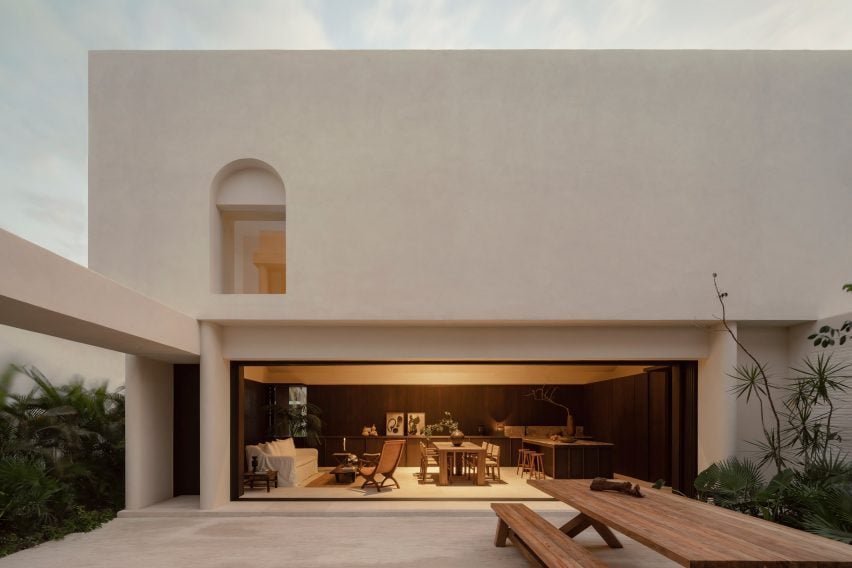

On the rectangular plot, the residence is organised as two volumes that sandwich a central courtyard and leave room for another outdoor space at the rear.
These two blocks have very different levels of transparency: the front, northern portion is very closed-off, while the back, southern volume – which is afforded more privacy – is much more open.
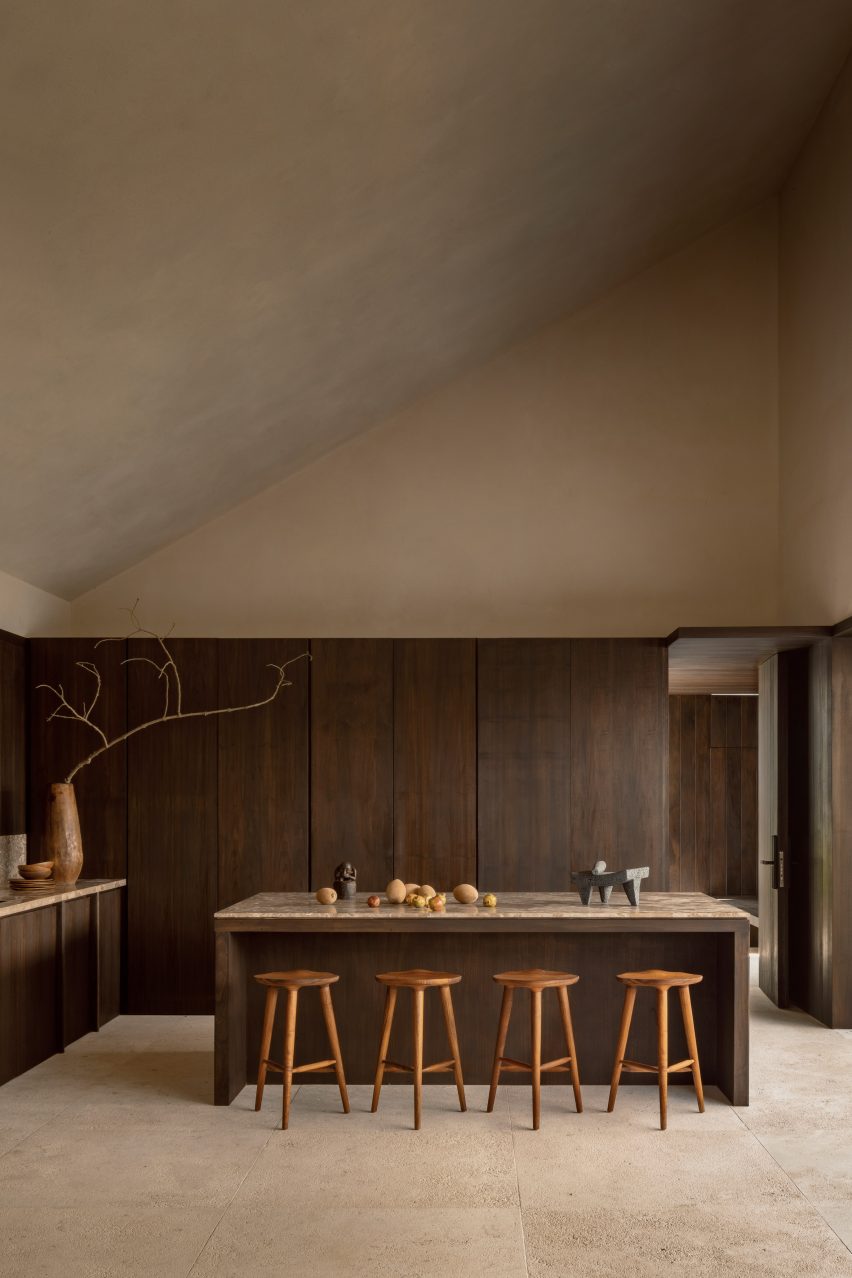

“The four facades of the house gradually change language, from the most closed and traditional on the street, to the most open and freely designed in the background,” said the architects.
The building presents a sloped tiled roof to the street, with only small openings for windows at ground level, and a passageway that leads to the entrance door.
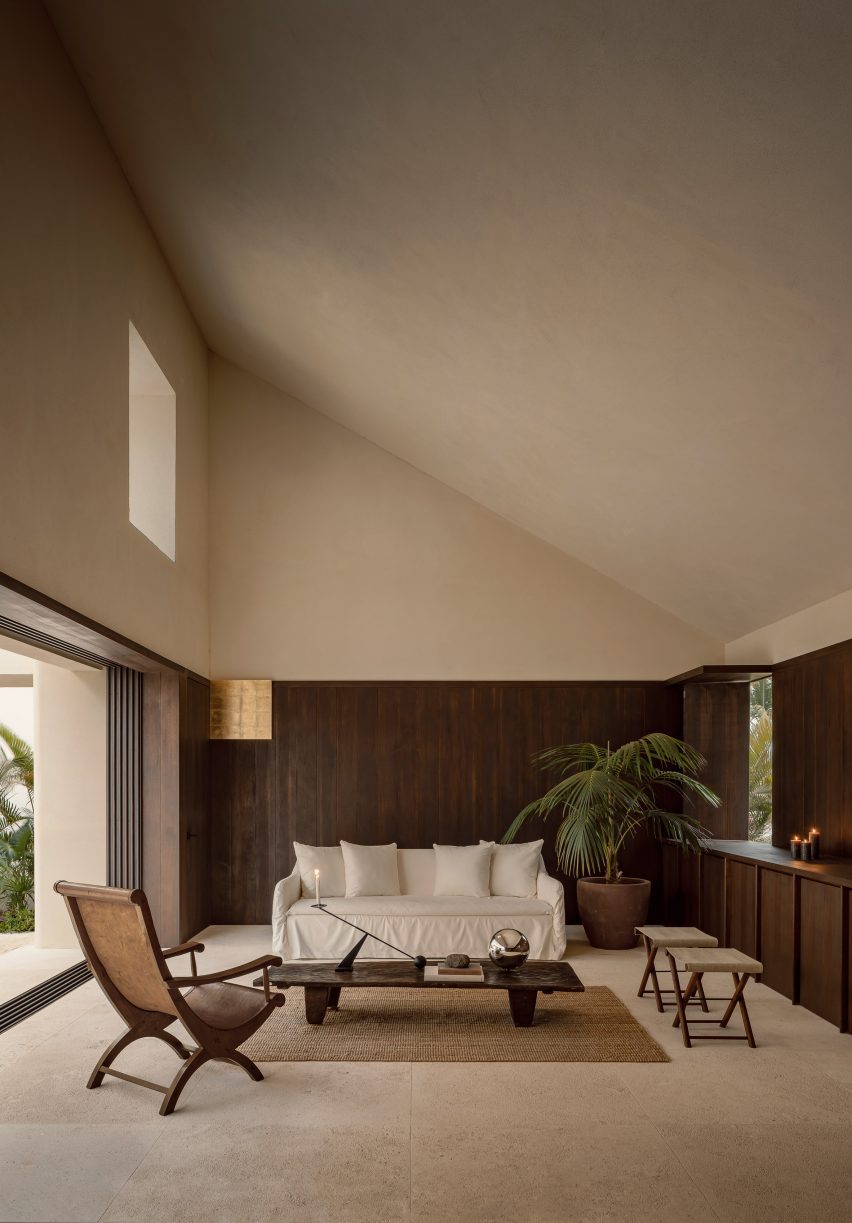

Inside, this double-height volume houses an open-plan kitchen, dining and living room.
The lower portion of this room is wrapped in dark wood panelling, while the upper walls and the angled ceiling are covered in textured beige plasterwork.
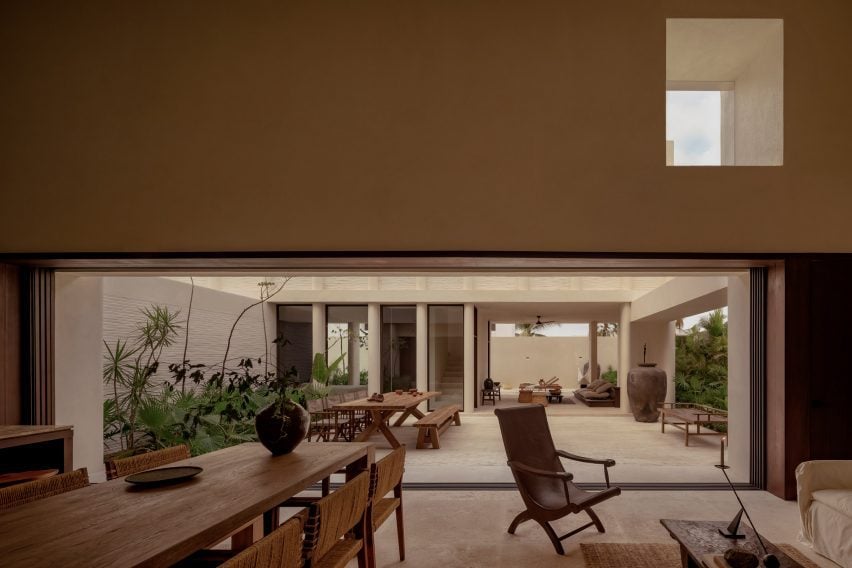

Large stone slabs laid across the floor match the colour of the plaster, which is also applied across the exterior walls.
Glass panels that face the courtyard fully retract, opening up the living area to the central outdoor space that serves as an al fresco dining room.
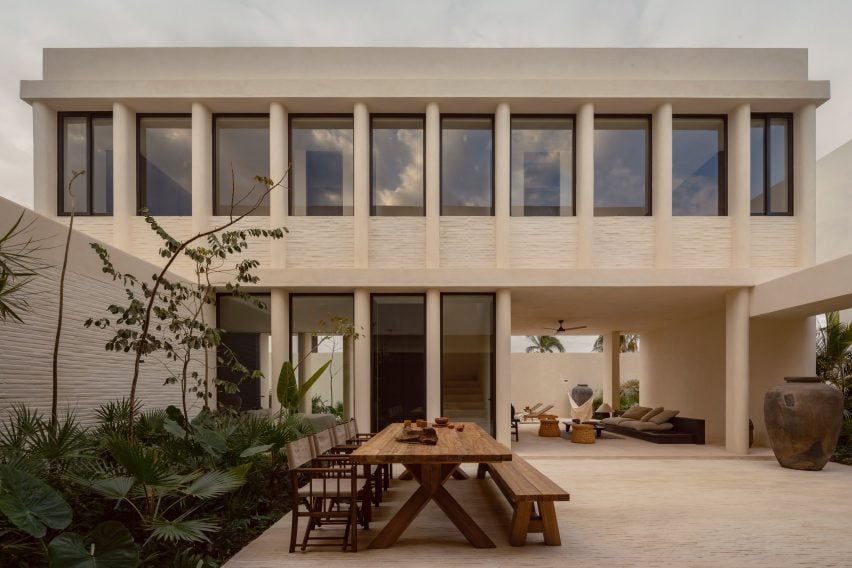

A long wooden table is positioned in front of a bed of tropical plants, which runs alongside a single-storey enclosure that joins the building’s two volumes.
This portion of the home contains a laundry room and a bathroom, so for sheltered access between the front and back of the home, the residents must use a covered walkway on the opposite side of the plot.
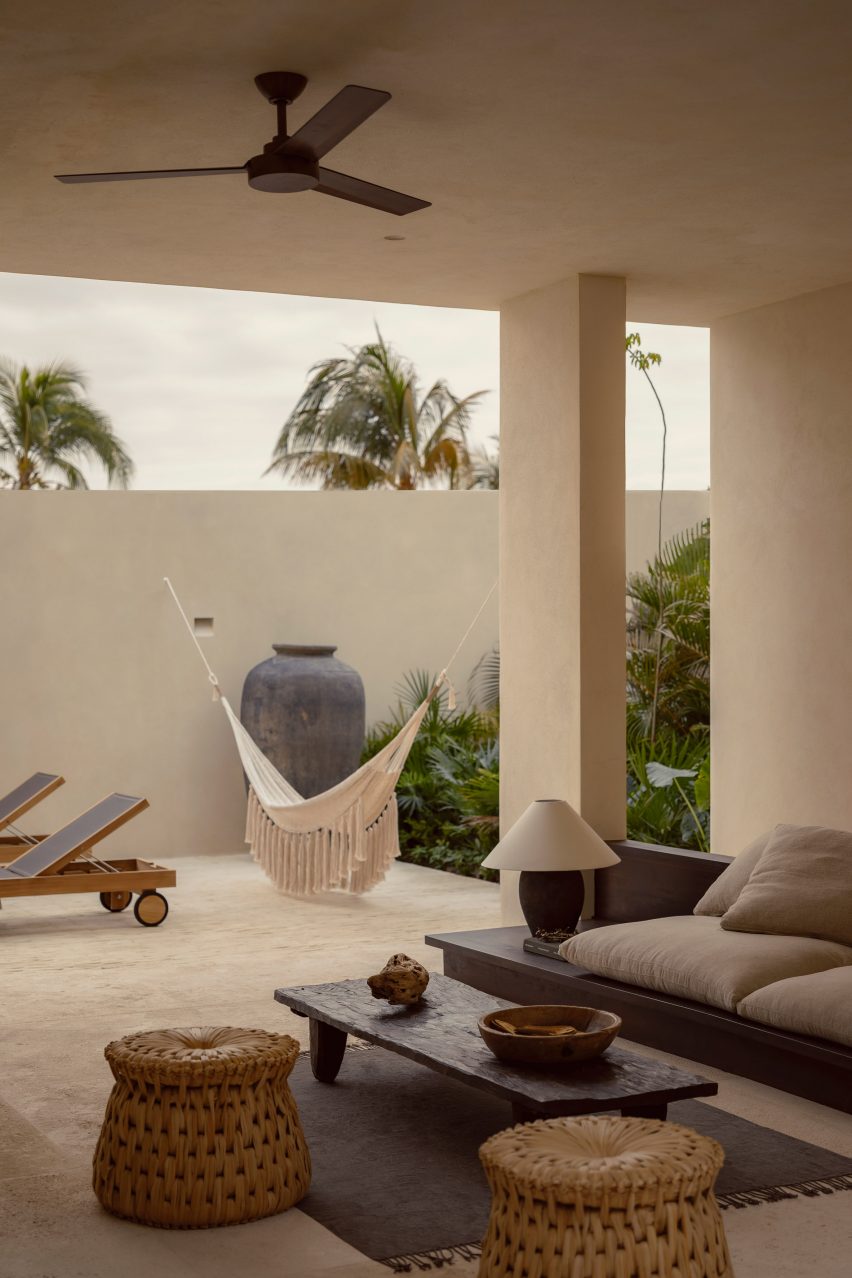

Within the second, southern volume is a breezeway that connects to the rear terrace and is furnished as an open living room, with low seating and tables for casual lounging.
“The permeability of the ground floor in the two bays blurs the line between interior and exterior,” the architects said. “The house is experienced as a large terrace that opens between patios and gardens.”
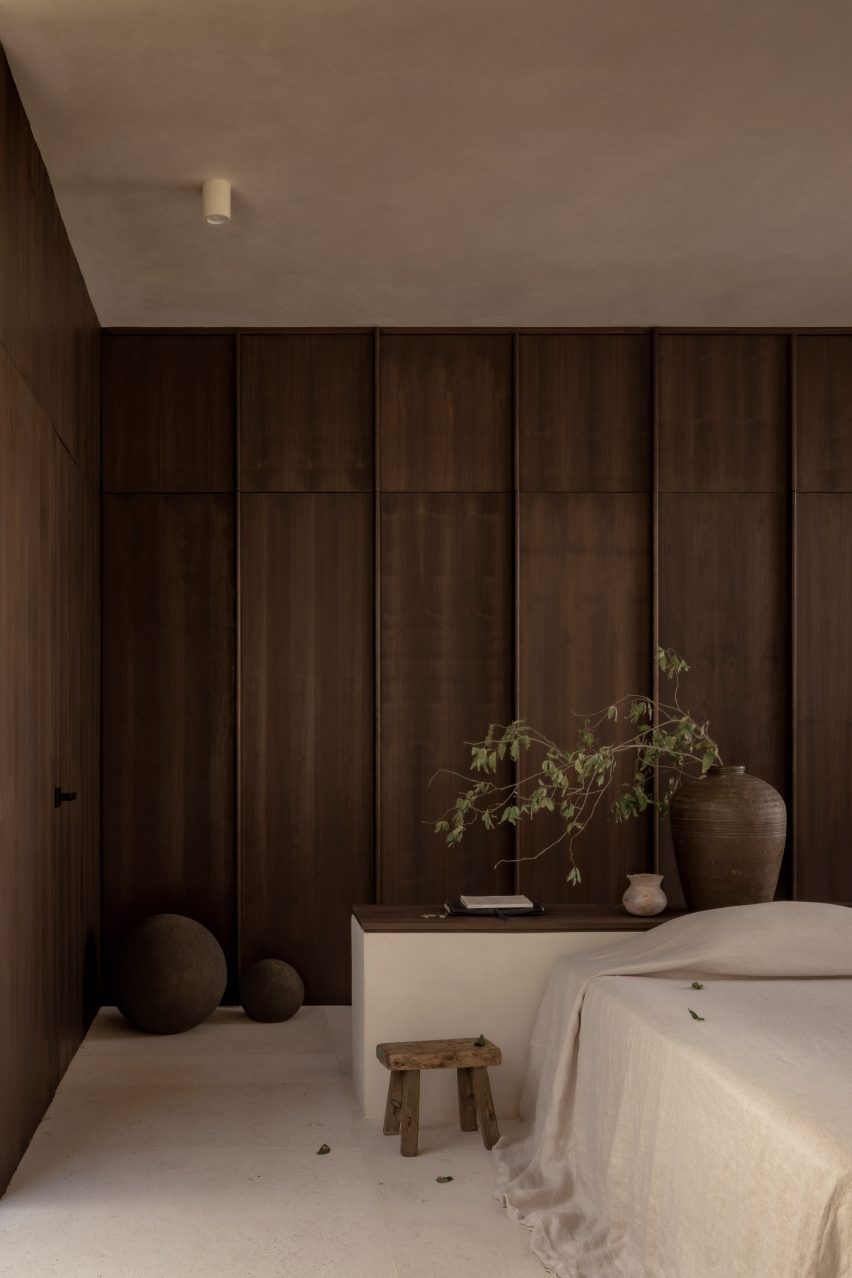

Indoors, a central staircase divides the volume in two. A bedroom occupies the other side of the ground floor, while two further bedrooms and bathrooms with access to a balcony can be found upstairs.
These rooms are all decorated similarly to the main social space, with dark wood panelling, stone flooring, and select decor accessories.
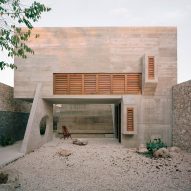

Unlike the almost windowless street elevation, the longer facades of the southern volume comprise rows of rounded columns that frame large glass panes.
“The rounding of the walls and the cylindrical columns simulate elements washed by the sea accentuating the plasticity of the beach house,” said the architects.
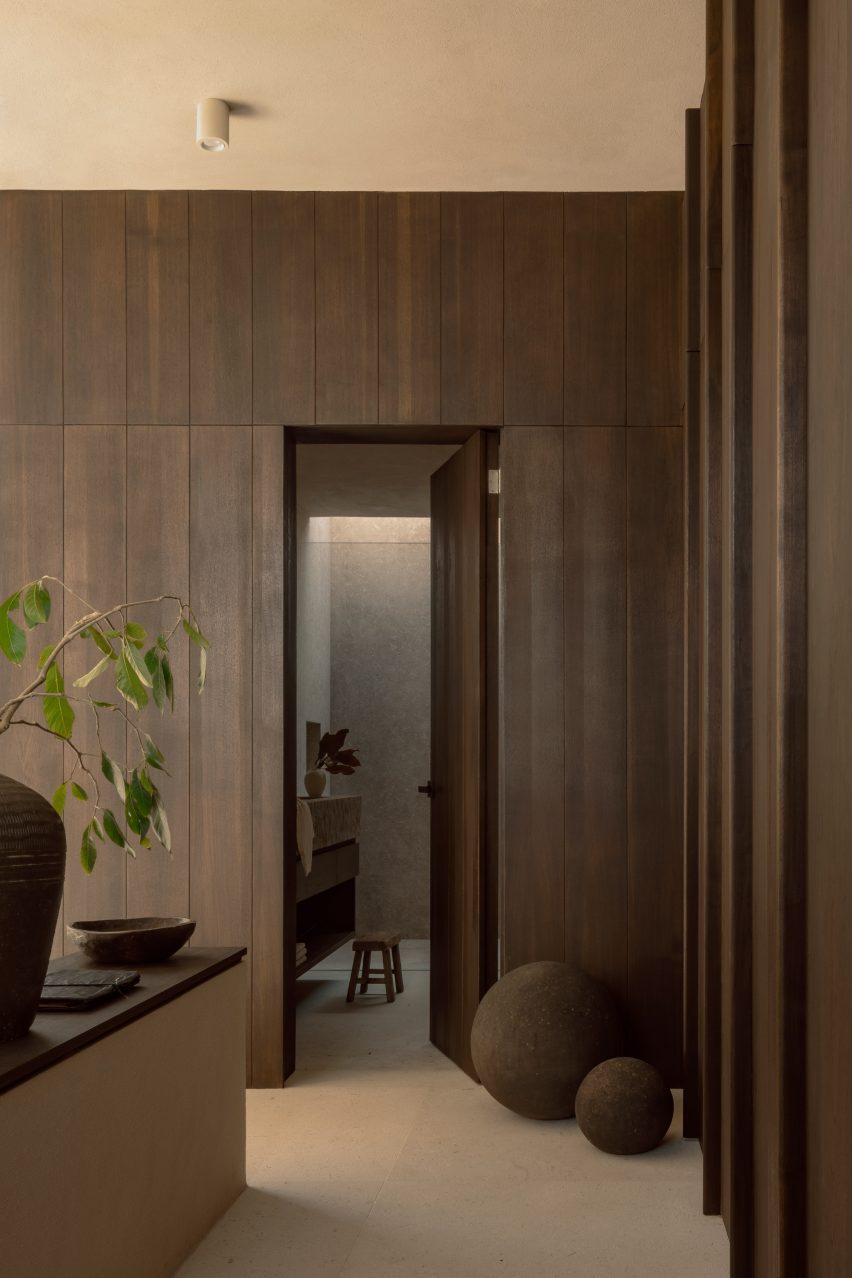

In the rear garden, more tropical planting, a swimming pool, loungers and a hammock add to the home’s minimalist yet laid-back atmosphere.
A restrained and cohesive material and colour palette throughout the indoor and outdoor spaces, and a focus on detailing, elevate the architecture and interiors.
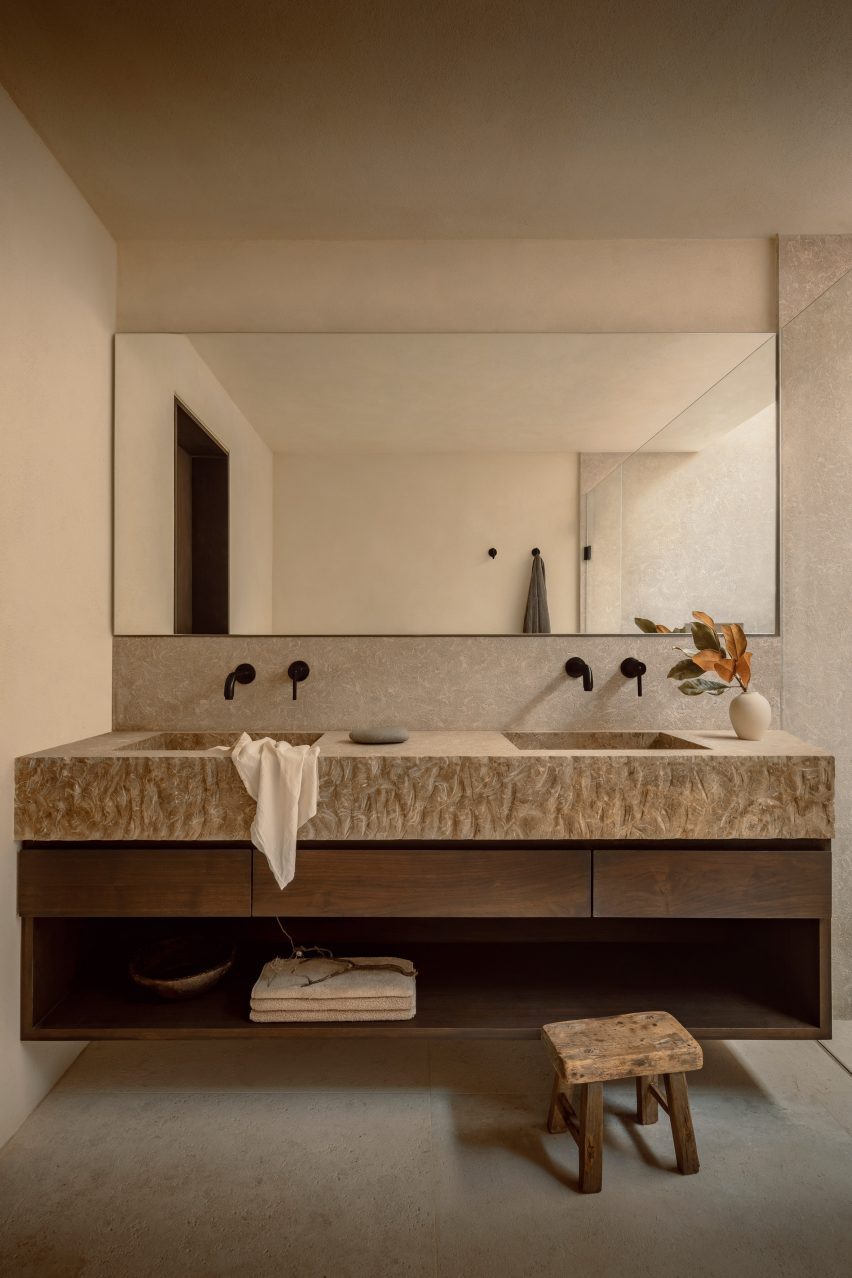

Both Béjar and Sánchez Zepeda are also prominent photographers in Mexico. Béjar has captured residential architecture projects across the country for studios like Cotaparedes Arquitectos, Lopez Gonzalez Studio, HW Studio and more.
Meanwhile, Sánchez Zepeda focuses on portrait and lifestyle photography via his studio Ansatz.
The photography is by César Béjar Studio.
Project credits:
Architects: César Béjar Studio, Fernando Sánchez Zepeda
Builder: José Daniel Segura Pimienta
